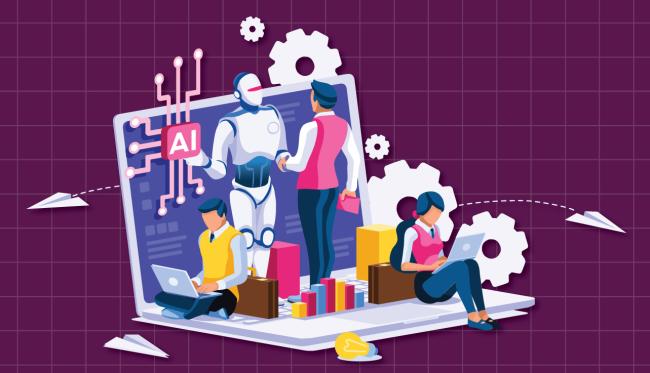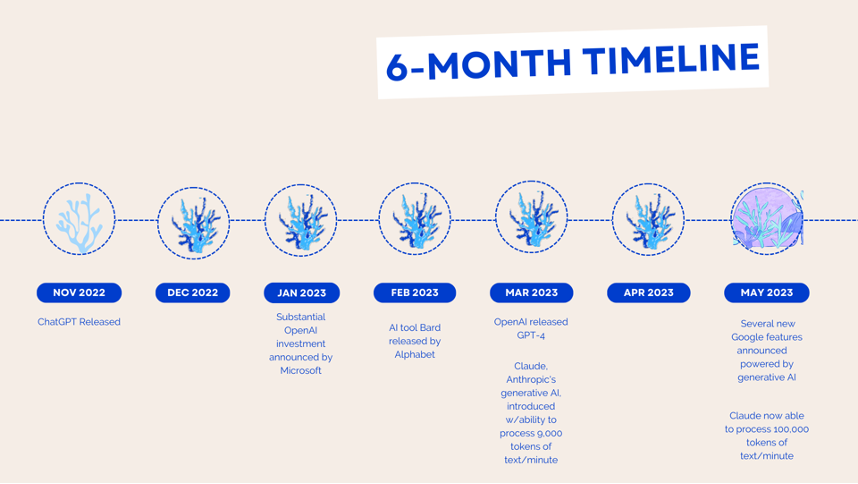Topics
Unleashing the Power of Generative AI for Business Growth

Besides generating language, AI is also generating businesses growth and contributing to the economy. According to a recent McKinsey report, generative AI has the potential to add $2.6 to $4.4 trillion annually to the global economy — potential being the operative word.
In less than a year, since the release of ChatGPT, the capability has blown up, and the future potential is exponential. Companies are creating jobs for engineers to generate AI prompts full-time; they are creating efficiencies by accelerating manual or repetitive tasks; and customer-focused departments are using AI to personalize experiences through audience targets based on customer behavior. As an enterprise, you want to leverage AI effectively and stay ahead of the curve.

But the latest research shows a gap between leaders’ curiosity and their willingness to take the plunge. IBM reports that 61% of companies have yet to design their enterprise-wide strategy for leveraging the power of Generative AI.
According to McKinsey’s research, a lag in adoption is preventing companies from achieving potential impact. Even though the automation potential is accelerating, its implementation is not keeping up yet:
“Technology adoption at scale does not occur overnight. The potential of technological capabilities in a lab does not necessarily mean they can be immediately integrated into a solution that automates a specific work activity—developing such solutions takes time. Even when such a solution is developed, it might not be economically feasible to use if its costs exceed those of human labor. Additionally, even if economic incentives for deployment exist, it takes time for adoption to spread across the global economy.”
The research also shows that the right investment will maximize bang for buck; using Generative AI in just a few functions could drive most of its impact across an entire organization. “AI maturity comes down to mastering a set of key capabilities in the right combinations—not only in data and AI, but also in organizational strategy, talent and culture,” according to Accenture’s latest findings on AI Maturity.
To determine an organization’s level of AI maturity, the report pinpointed areas in the Talent and Culture function such as mandatory AI training tailored for senior leadership and specific functions, employee competency in AI related skills, embedded and encouraged innovation culture, and AI Talent Strategy.
Once you decide on the prioritized area(s) of your business to deploy generative AI, you then want to decide on the tactic. IBM’s Institute for Business Value found that leaders are more focused on improving capabilities and creating growth through generative AI than reducing costs. Results from their survey of executives across the globe show that the top benefits expected from generative AI include improving content quality (56%), increasing competitive advantage (51%), scaling employee expertise (51%), and expanding organizational capabilities (49%).
How is your business leveraging Generative AI for growth? Are you leaving potential on the table? Now is the time to take the next step toward adopting this valuable technology. Explore the possibilities of Generative AI and Augmented Reality with TeamworkAR. This comprehensive enterprise solution from CGS, Inc. empowers your employees and boosts productivity. Watch the unscripted interaction between a trainee and an ‘unruly passenger’ in our recent work with Scoot, a subsidiary of Singapore Airlines.
To learn more about the potential return on investment, check out our CGS TeamworkAR™ Infographic, featuring success results from Boeing, Uniliver, Toshiba, DHL, and more. It's time to unlock the limitless impact of these technologies and propel your business into the future.
Additionally, to get a comprehensive overview of Generative AI and Chat GPT, watch or download PDF of CGS’ Thought Leadership Series: The Transformative Power of Generative AI and ChatGPT.

